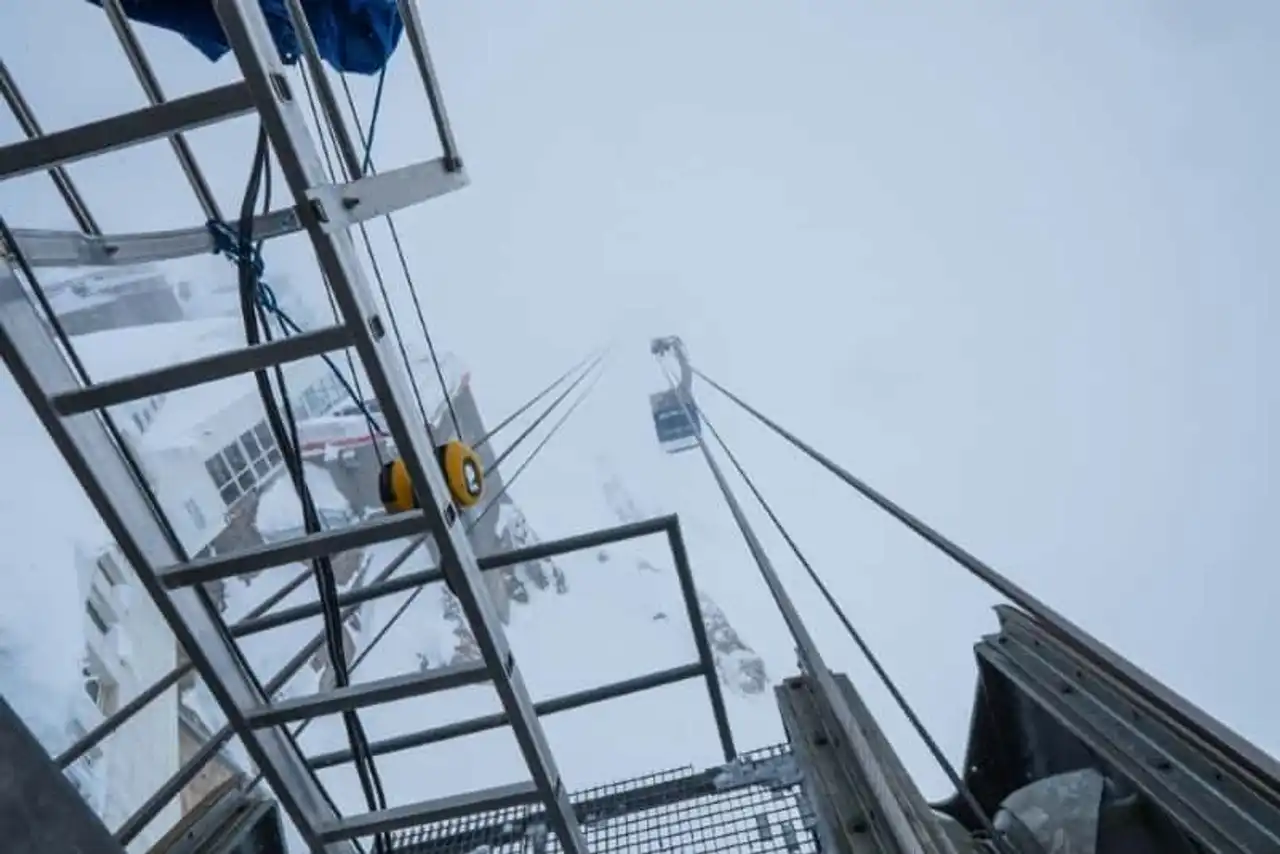Are you going to the High Pyrenees? Discover our guide to visit the Pic du Midi!
Located in the Hautes-Pyrénées, the Pic du Midi de Bigorre is one of the 129 main summits of the Pyrenees chain, a natural balcony serving as a border between France and Spain. With an altitude of 2,877 metres, the Pic du Midi is on horseback in the towns of Sers and Bagnères-de-Bigorre. It is famous for the astronomical observatory that overlooks its summit. Prised by man since Antiquity, he is responsible for history and mythology, but not only! Amateurs come here to search for pure air, exceptional light, nights without light pollution and a very stable atmosphere conducive to astronomical observations. Visiting the Pic du Midi and achieving its ascent is undoubtedly one of the must-sees of the French Pyrenees chain. Mounting on the roof of this massif allows you to dominate the vastness of natural landscapes and to have a breathtaking view a few minutes by cable car.
Frequented since the Neolithic period, the summit is a place of astronomical observations since the eighteenth century. With our modern equipment, it has become a place for relaxation, an invitation to calm and serenity. It is accessed either by cable car or by hiking paths (for the most sporting). But we don't tell you everything! Here's our mini guide to visit the Pic du Midi!
History of the Pic du Midi

Photo credit: Shutterstock / Anibal Trejo
Known and coveted since Antiquity, Man has always been fascinated by the ascension, difficult at the time, of the Pic du Midi.
The legend tells us that the Pyrenees would be the tomb of Pyrenees, who died of having loved Heracles too much. The latter would have chosen the Pyrenees chain to install its tomb there. According to this legend, Python, a mythical snake born of their love and watching over the tomb, has his head in Gavarnie and his tail at the Pic du Midi.
In the 19th century, the summit of the Pic du Midi was lined with a meteorological station dedicated to research. Scientists want to accurately understand terrestrial magnetism, atmospheric physics, glaciology and seismology. In front of the quality of the sky, the astronomical observatory was founded in 1882. Since then, the site has been guided by technological developments and still serves as a scientific observation post. Originally reserved for scientists, the rise of the Pic du Midi represented an out-of-pair challenge.
Threatened by the State’s closure in 1994, the Observatory of the Pic du Midi was finally saved. The Midi-Pyrénées region created on site a mixed union that began the installation of a new cable car available to the general public in 1996. The site opened in 2000 to tourists. Throughout the year, a cable car carries its passengers from La Mongie to the peak of the peak, with a cabin change at 2,314 metres above sea level. Today it is the highest museum space in Europe. High-level scientific venue became a sporting and cultural attraction, Pic du Midi was awarded the National Natural Place label in 2003.
What to see and what to do at the Pic du Midi?

Photo credit: Shutterstock / PHILIPIMAGE
Visit the Pic du Midi makes it possible to climb by cable car. The first trip is from La Mongie – at the foot of the famous pass of the Tourmalet. The cable car leads you to the Taoulet Intermediate Station at 2,341 metres above sea level. The route of the first section is 1,781 kilometers and operates a positive 556 meters. A second cabin, on a opposite dock, takes you to the Pic du Midi and offers an even more spectacular overflight of more than 2.6 kilometers above the mountains, with a second denial of 551 meters. Little by little, the observatory reveals itself: it is the summit of the Pic du Midi. You arrived at the cable car station, at 2,877 meters above sea level, after an unusual course in the air and overlooking the nevs.
It is also possible to climb on foot, for the most sporting hikers. Access is made by the mulet tree trail, the historic route to visit the Pic du Midi. This is the way that the builders of the observatory took. They transited food and materials by the porters. The latter loaded up to 40 kilos under sometimes spartan conditions. The hike is 20 kilometers for 1,700 meters of positive elevation. So much to say that she promises to be difficult! Two other paths are possible:
- the pass of the Tourmalet (800 meters of elevation, 13.4 kilometers back and 2h30 climb)
- the hut of Toue (950 meters wide, 13 kilometers round trip, 2h45 climb)
Direct access to panoramic terraces is open to the public. They give access to a breathtaking viewpoint on the Pyrenees chain. In clear weather, we even see the foothills of the Massif Central, northeast of the Occitania region. Panoramic tables allow you to identify the summits in front of you, and other interpretation tables provide information on the surroundings of the massif. A coronograph even allows to observe the sun without hurting the retina! In February 2018, a unique window opened. Careful, you have to have the heart tightened. It is a pontoon in the vacuum of 12 meters long. Don't worry further measure: you walk on a glassy and fully transparent promontory. You don't risk anything but we guarantee you a few cold sweats. A glass plate of several centimeters of thickness is at the end, on which the visitor will walk above 1000 meters of void!
Inside, the Pic du Midi restaurant serves culinary specialties and local products in the region. The place is ideal for an unusual meal, at nearly 3,000 meters above sea level. Magic is guaranteed with the backdrop. An experience space is accessible to all visitors wishing to discover the scientific history of the observation site. The museum highlights the climate events of the Pic du Midi, the night landscapes, and especially the difficulty and challenge created by the men of the 19th century to build an observatory on this Pic so hostile to man.
How to go to the Pic du Midi?
The nearest airports to fly from Paris or other destinations are Tarbes and Pau airports. To get the best flights, choose to land in Toulouse-Blagnac with the Compare Ulysses .
To visit the Pic du Midi, we will take the A64 from Toulouse, until exit 14 to Tournay/Bagnères-de-Bigorre. Follow Bagnères-de-Bigorre on the D20. The D918 takes you south, at the foot of the La Mongie cable car station. From Biarritz and Pau, take the A64 to Exit 12 to Tabes-West, and follow the D940 to Lourdes, direction Argeles-Gazost, Luz Saint-Sauveur, then Barèges and La Mongie. Note that the pass of the Tourmalet is only open from June to November.
You don't have a car? Go for carpool! Buses and shuttles provide connections from Bagnères-de-Bigorre to La Mongie every day, until the station is closed (2 € per trip, 4 € return). From Tarbes, take line 944 towards La Mongie/ Pic-du-Midi at the SNCF train station in Tarbes. The journey takes 1h35.
Schedules and prices of the Pic du Midi

Photo credit :: Shutterstock / Fred Marie
Schedule
The hours of the Pic du Midi are :
- August, September, October 2019: open daily,
- January, February, March 2020: open daily,
- April 2020: open until Sunday 5,
- June, July, August, September, October 2020: open daily.
The Pic du Midi will be closed from November 3, 2019 to December 6, 2019 and from April 5, 2020 to May 31, 2020.
Until August 25, 2019, cable car hours are:
- First departure : 9h,
- Last departure : 16h30
- Last return from the Pic: 7pm.
From August 26 to November 3, 2019:
- First departure: 9:30,
- Last departure: 16h,
- Last return from the Pic: 5:30.
Rates
- Adults: 45 €,
- Child under 12 years old : 27 €,
- Children under 5 years of age: free,
- Reduced price (students, people with reduced mobility, job seekers): 40 €,
- Planetarium supplement : 6 €.
Good to know.
- Check climate conditions,
- Bring warm clothes due to altitude,
- With sunglasses and sun cream,
- Bring water,
- Recommended for pregnant women, cardiacs and children under 3 years of age,
- forbidden to animals,
- forbidden to bring his picnic to the top,
- You can also spend the night at the top, to enjoy sunset and sunrise and one night under the stars (from 1 July to 15 September, from 379 €/person for an individual room, and from 439 €/bedroom for two people)!








Loading comments ...